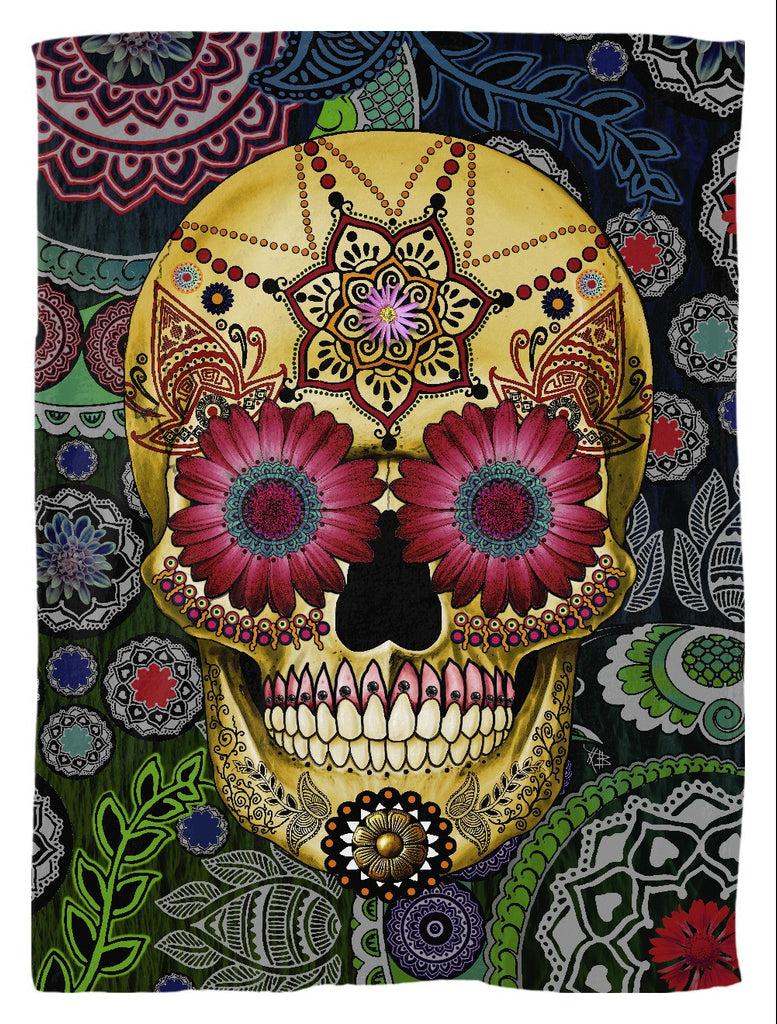

"It's part of cultural identity and very important to show respect to many folk artists that handmade each element we observe in an altar. "This tradition acknowledges the importance of honoring our ancestors' legacy, their teachings and our duty to perpetuate this community event as part of an organic way to deal with the physical death of a loved one," Vivar said. What Vivar wants to participants to understand is that Day of the Dead is not a Mexican Halloween – regardless of how brands market the holiday. MASA is also facilitating a calavera (skeleton) workshop as part of SparkNight at the Zimmerli Museum on Nov. with a traditional altar exhibit and dance and musical performances. The celebration continues Friday evening from 7-9 p.m.

at CLAC's offices, 172 College Avenue,New Brunswick, led by Lazos America Unida director Teresa Vivar, who will discuss the origins of the sugar skull ( calavera de azucar) tradition in Mexican culture and how it has been adapted in the United States. 4) with two sugar skull craft workshops from 2-3:30 p.m. The holiday revolves around ritual preparations by family to visit the graves of loved ones, the preparation of a home or community ofrenda, or altar, and the laying of marigold flower petals and other handicrafts, said Carlos Fernandez, director of CLAC.
#COLORFUL DIA DE LOS MUERTOS SKULL DOWNLOAD#
1 and 2, draws on pre-Hispanic Mexican and Spanish Roman Catholic traditions intended to facilitate the return of departed souls to the Earth. Browse 1491 incredible Dia De Los Muertos Sugar Skull vectors, icons, clipart graphics, and backgrounds for royalty-free download from the creative. “We want to stretch it to as many interested cultures as possible – not just to learn about the holiday, but to enjoy and partake in our traditions.”ĭía de los Muertos, or Day of the Dead, celebrated on Nov.

“I want students of both Mexican and non-Mexican descent to learn and have the opportunity to engage with our culture,” said Caballero. Creating an altar for Día de los Muertos is a meaningful and personal process. Día de los Muertos, or Day of the Dead, is a celebration of life and death. In honor of the holiday, MASA is partnering with the Center for Latino Arts and Culture at Rutgers-New Brunswick (CLAC) and the New Brunswick community organization Lazos America Unida to host a Día de los Muertos celebration tomorrow. “Movies like Coco made people more familiar with the holiday, but they aren’t as familiar with the meaning behind the rituals and the importance of Día de los Muertos in our culture,” said Rutgers-New Brunswick senior and president of the Mexican-American Student Association (MASA), Axel Caballero. Browse Getty Images premium collection of high-quality, authentic Dia De Los Muertos Skull stock photos, royalty-free images, and pictures. Even Ken and Barbie can be seen sporting traditional calaca (skeleton) costumes and Target sells merchandise for the day. Today the holiday’s symbols – especially ornate sugar skull designs – adorn everything from U.S. And Dia de los Muertos helps the living celebrate the loved ones who have died.In the past, participants and dancers used careteas, or masks, to scare the dead away at the end of the festivities.But in modern-day celebrations, people paint their faces to look like skulls, decorating it to represent a deceased loved one or an expression of. The image is thought to be taken from a 1910 sketch by Mexican artist Jose Guadalupe Posada and was originally intended to be a satire of the elitist upper classes of the early 20th century the message being that we are all equal in death.Once a celebration largely unknown outside of Mexico, Día de los Muertos has gone mainstream in the United States. The image of a calavera most commonly associated with Dia de los Muertos now is that of La Calavera Catrina, a skeletal portrait of a high society lady. The day itself was moved by Pope Gregory III to November 1 to suppress pagan religious festivals. The shared Catholic faith of Latin America brings with it a religious influence which is often displayed in the face painting, which is coupled with both traditional Aztec influences and European symbolism. The face masks are traditionally molded from sugar and decorated with glitter, feathers and anything else for the celebrations.Īs the celebration has become more and more popular, these sugar skulls have been translated onto face paint, providing the perfect outfit for the occasion. At Dia de los Muertos celebrations in much of Latin America, la calavera de azucar, or a ‘sugar skull’, is a common sight.


 0 kommentar(er)
0 kommentar(er)
